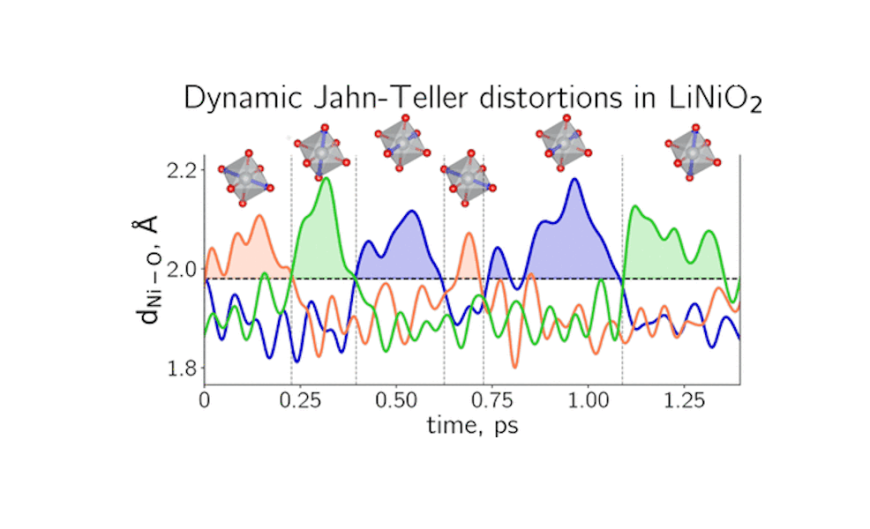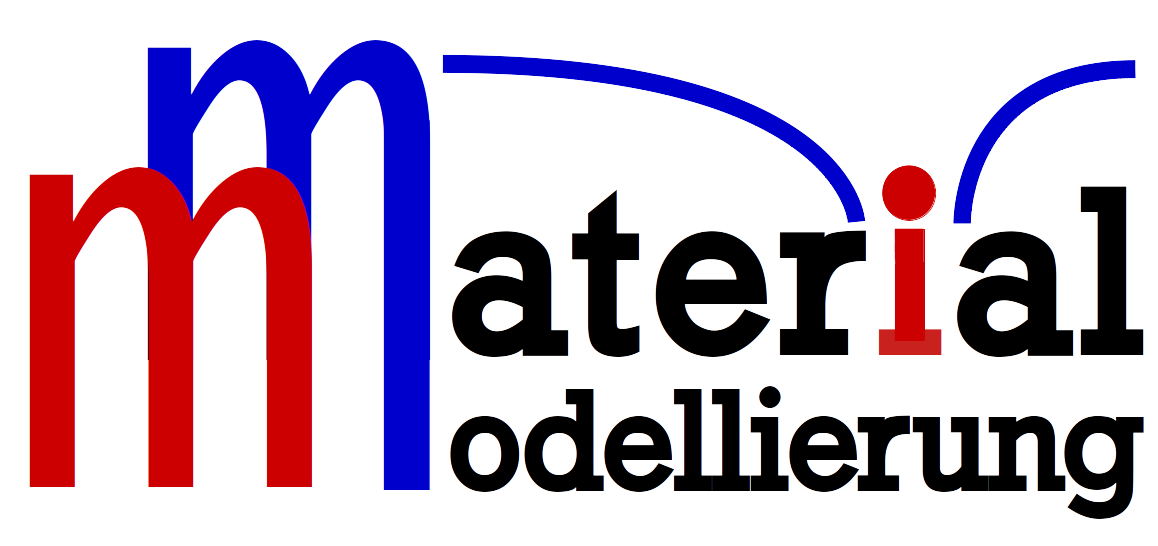And yet it moves
LiNiO2, a dynamic Jahn−Teller System
2020/11/27 by K. Albe
In this joined work with researchers from BASF we studied the dynamics and cooperativity of JT distortions in LiNiO2. While static DFT calculations unequivocally advocate the stability of a monoclinic JT-distorted LNO, this is elusive to experiments: JT distortions are observed on a local scale, but the global crystallographic symmetry is systematically identified as a perfectly undistorted rhombohedral structure isostructural with LiCoO2. Thanks to molecular dynamics simulations, we monitored individual Ni−O bond lengths as a function of time and assessed that JT distortions indeed take place, but reorient dynamically. The statistical correlation analysis revealed that, although some extent of cooperativity might survive within one plane, correlation between different layers is for all practical purposesnonexistent. The continuous reorientation of the JT direction appears on average as though all Ni−O bonds were equal, whereas non-cooperativity between layers prevents the system from undergoing a macroscopic monoclinic shear; the combination of these two effects attributes to LNO the commonly accepted R3̅m symmetry. This result rationalizes the conundrum that, for nearly two decades, juxtaposed the clear JT activity of Ni3+ to the lack of macroscopic monoclinic shear. Quoting John Hasbrouck Van Vleck, who extended the JT theorem to ions in crystals, “it is a great merit of the JT effect that it disappears when not needed”. R3̅m is neither a local minimum nor a saddle point: it is the tip of the Mexican-hat-shaped potential, whereas the reorientation path goes along the warped trough around the maximum. Computational studies of LNO and directly related compounds should therefore avoid using R3̅m as the reference compound and use the true ground state (P21/c)instead; not only is using R3̅m conceptually wrong, but it also leads to non-negligible quantitative errors. R3̅m should still be used in the analysis of diffraction data on LNO.

The work appeared here:



